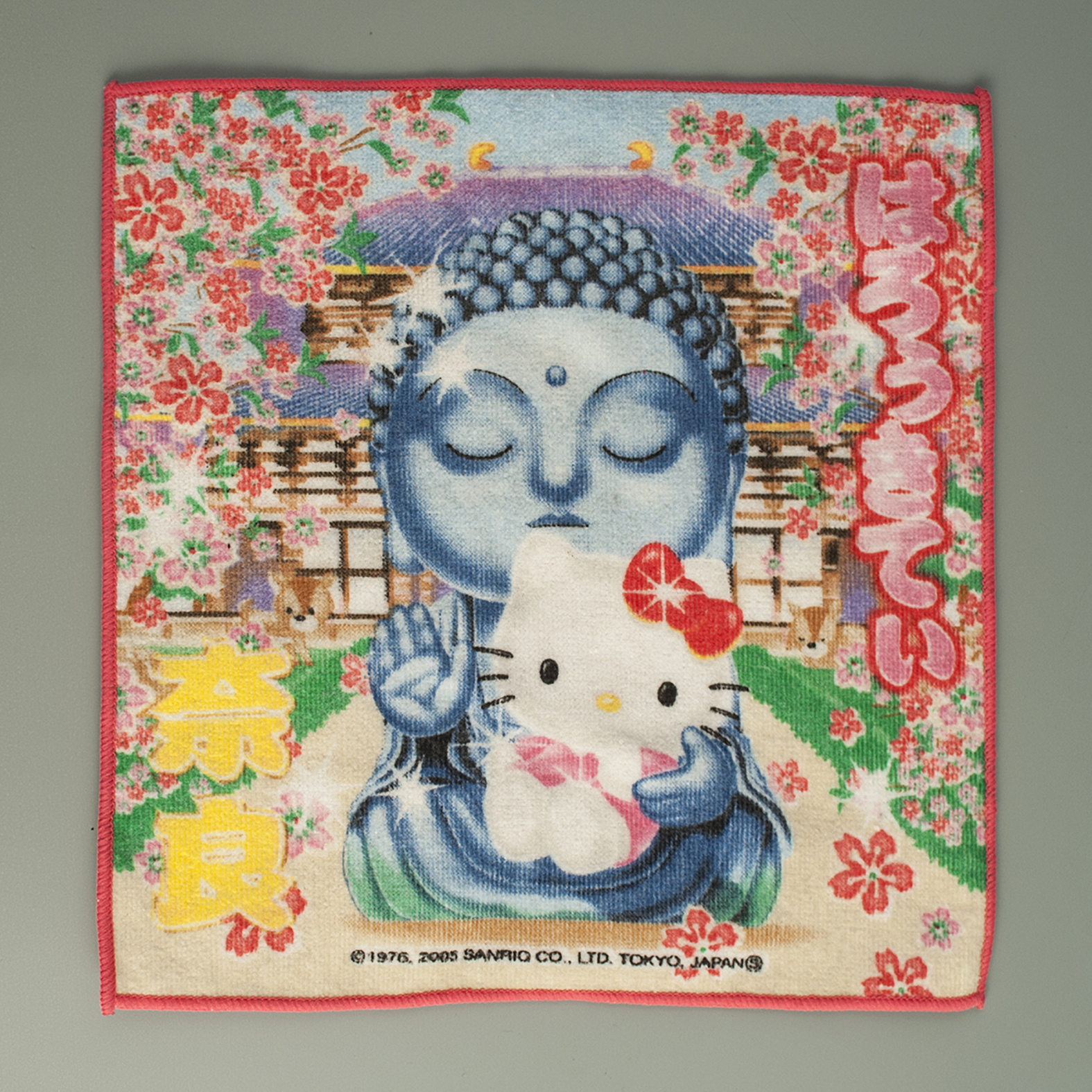Meditating Buddha Hello Kitty Mini Towel
Japan, 2005

I’m fascinated by the way different Asian cultures treat images of the Buddha.
In Thailand, for example, sitting on the lap of a Buddha statue—a once-traditional photo-op for tourists visiting Siam’s ancient capitals—is now strictly forbidden. Foreigners with Buddha tattoos risk being turned away at Immigration; even T-shirts with Buddha images are taboo. Actually damaging a Buddha can land you in a Thai prison, and smuggling drugs inside a hollowed-out Buddha statue—well, let’s not even go there.
Nepal, where the historical Buddha was born, in 563 BC, takes a less draconian approach. Though Buddha images are respected, local businesses are happy to cash in on his panache: Buddha brand potato chips, Siddhartha Copy Center, early morning mountain flights aboard Buddha Airl. And though the hand-lettered signs at Kathmandu’s famous Monkey Temple warn Don’t Climb on Buddha!, many Chinese tourists don’t speak English.
Then, to confuse things altogether, there’s Japan. In Kamakura, at the shrine of the Great Buddha, a street stall sells hard brown globs (attached to key chains), which are said to be boogers from the Enlightened One’s nose. In nearby Nara, the Deer Park, the doors of the local police cars portray grinning Buddhas, shaking the hands of cartoon deer.
This small washcloth was made by Sanrio, the company that owns Hello Kitty—an icon as ubiquitous in Tokyo as plastic sushi. I love the way it integrates cats and buddhas: two of my favorite spiritual beings. It was intended to be given as a gift, but what, really, is it good for? Anything involving soil, or bodily fluids, seems sacrilegious. Unless, of course, it’s used to polish Buddha statues—or serve as bedding for newborn kittens.
